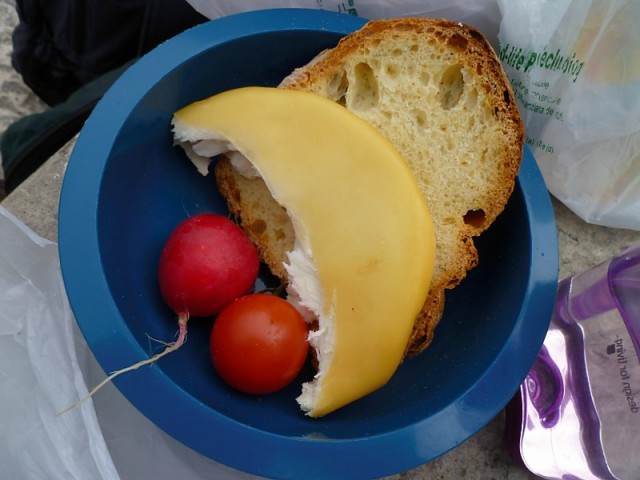We got on the bus in Naples and departed six hours later in another millennium. Matera, in the Basilicata region of Southern Italy, has been continually occupied by humans since Paleolithic times. We were there to see the Sassi di Matera, cave dwellings and churches that people have been living in for over 9000 years.When I say we were in another millennium, I mean it was as if we had completely left any previously known time and ended up in the past. It didn’t feel like we were appreciating some well-preserved landmark, or lovingly restored ruins. It may have been the time of year (mid March) but we didn’t see any tourists and hardly any other people as we explored.
After reading about the sassi on the UNESCO World Heritage website (aka my personal porn site) I read a memoir by Carlo Levi called Christ Stopped at Eboli which intensified my interest in the cave city. In the 1930’s Mr. Levi, an anti-fascist activist, was exiled by Mussolini’s government to a town nearby Matera. He describes the region’s isolation, terrible poverty and the prevalence of diseases such as malaria and the sassi themselves at “like a schoolboy’s idea of Dante’s Inferno.” People and livestock were living all together with no running water or electricity, with dreadful hygiene. Mr. Levi’s book got the attention of the Italian government and the sassi’s residents were finally removed to nearby housing developments. The caves were largely abandoned until the early 1990’s.
The caves themselves are architecturally fascinating, stacked up and an ingeniously fitted with each other. If Frank Gehry designed a biblical landscape, it would look like Matera. If a cubist painting of the holy land suddenly came to life, it would also look like Matera. Some of the cubist-caves are now even being used as high-end hotels and restaurants. We were also fortunate to be able to enter several rupestrian (rock-hewn) churches, though photos were not allowed so we don’t have pictures. The churches are carved straight into the rock, complete with multiple rooms, crypts, ornaments and Byzantine era frescoes.
Outside of the sassi region, where we stayed in a comfortable B&B, is a the pleasant new town, where we purchased our picnic goodies from an outstanding farmer’s market. The town’s bread, straightforwardly called Pane di Matera, is an attraction in it’s own right: a giant lumpy loaf, a lovely light yellow yellow, that we munched on for several days after. To us outsiders, all the people of the town resembled each other, and kept thinking we were seeing the two sisters who ran our B&B. It rained for a couple of hours and surely the locals must have secretly laughed at HOB for wearing The Infamous Blue Traveling Poncho. When the rain stopped short old men in flat caps came out to stroll together on the shiny brick streets using their umbrellas as walking sticks. I wonder if they spent their youth in the caves, and what they think about their former slum of a home town turned into a world heritage sight. I wonder if they visited Chicago, my home would feel as out of time and place as their home does to me.
How we got to Matera: bus from Naples
Where we slept: Donna Eleonora B&B Price: €50 for a double. Recommended: highly.
Picnic with Pane di Matera













That poncho is a spectacular disaster.
LikeLike
We like to think so.
LikeLike
Looks like such an interesting/beautiful city. Thanks for sharing! I would love to put this on my list of places to visit when I go back to Italy someday 🙂
LikeLiked by 1 person
Thank you for reading tessiciarloni—all of Italy is beautiful of course, but Matera is one of the most stunning and unusual places off all. It’s always time to go back to Italy, isn’t it? 🙂
LikeLiked by 1 person
Yes, definitely always time for Italy 🙂
LikeLiked by 1 person